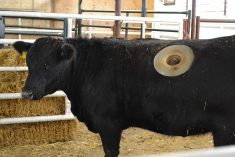chicago/reuters
The U. S. chicken industry needs another home run, similar to the one that took the once lowly chicken wing and turned it into a football fan’s “must have” snack.
This time, dark meat leg quarters need a marketer’s touch. For about two decades, the $60-billion U. S. chicken industry has sent
leg quarters, a combination of the drumstick and thigh, overseas, mainly to Russia and to a lesser extent China, while the white breast meat is eaten domestically.
Read Also

Milk transportation requires intricate logistics
Alberta Milk explains transportation system in Western Canada which sees millions of litres cross borders
But those two countries will likely buy less U. S. chicken in the years ahead due to trade disputes and increased production by their own industries. That could put more dark meat, which is about 50 per cent of the chicken, on U. S. store shelves and restaurant menus.
“If you are talking about the leg quarter portion, we will have to find other markets and we may have to eat some of it ourselves,” said Paul Aho, economist at the consulting firm Poultry Perspective.
Russia bought 1.62 billion lbs. of U. S. chicken last year. China bought nearly one billion lbs., much of it chicken feet.
New products are being developed to sell leg quarters domestically. Ground chicken, thigh meat and fajita strips are now on store shelves and more products are likely on the way.
“We are seeing more boneless, skinless thigh meat in the meat case,” said Bill Roenigk, economist with the National Chicken Council. “The thigh meat from chicken makes a very nice ground product to compete against hamburger.”
Chicken companies are also looking at Africa and possibly India as export destinations.
India, with more than a billion people and a $3.6-billion GDP, could be an important market, if the United States can convince it to remove the tariffs that keep out foreign chicken.
“India is very protectionist,” said Toby Moore, spokesman for the USA Poultry and Egg Export Council. “Hopefully, we will gain access at some point.”














